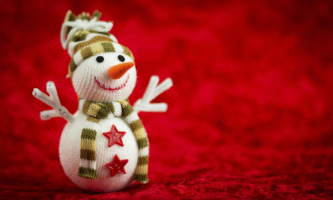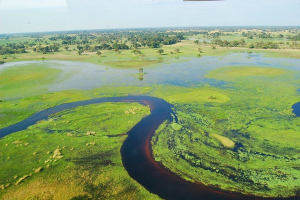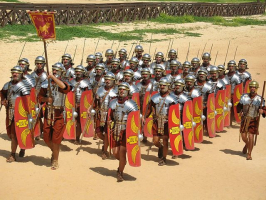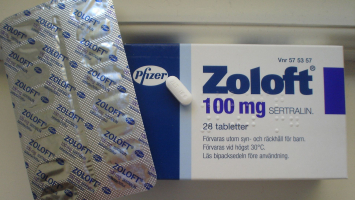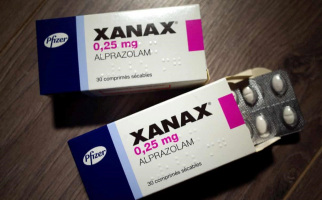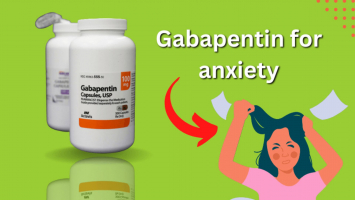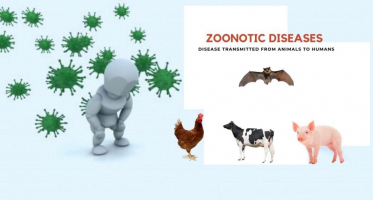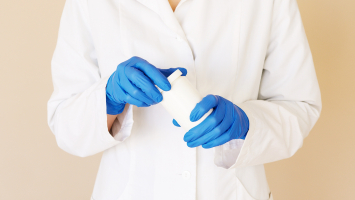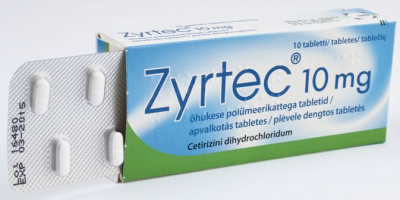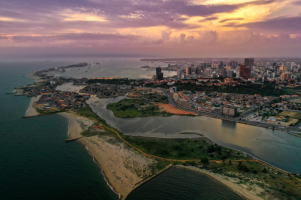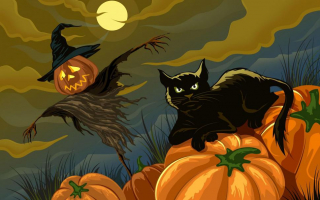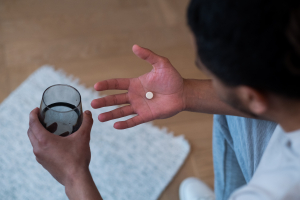Top 10 Things to Know about Latvia
For centuries, Latvia has been a crossroads of Europe, giving it a fascinating history and an exciting future. The country is divided in half by a beautiful ... read more...natural landscape of forests, lakes, and deep river valleys, and the other half by vibrant cities that blend World Heritage sites with modern designs. If you're planning a weekend trip to Riga or a long summer vacation exploring the countryside, here are some things to know about Latvia to get you started.
-
The success of Latvia's transportation sector is dependent on a number of favorable circumstances. The geographical location of Latvia, with access to both Russian and EU markets, as well as its excellent infrastructure, are the foundations of its success. Latvia, being located on the European Union's external border, has high-quality infrastructure connecting it to the Russian Federation, the Republic of Belarus, and the entire Eurasian continent.
It has one of the best rail connections to Russia and three of Europe's northernmost ice-free ports. Latvia is uniquely positioned to facilitate access to the Baltic Sea for the region's landlocked areas during the winter, when most ports and roads in Northern Europe freeze. Latvia has the potential to serve as a transit hub for Far Eastern cargo via the Trans-Siberian Railway connection to Western Europe due to its location.
In 2016, the transport, transit, and storage sectors contributed roughly 9% of Latvia's GDP and employed nearly 8% of the working population. The full integration of Latvia's transport infrastructure with the Trans-European multi-modal transport system is a key goal for the development of the Latvian transport system.
The development of the transportation sector is being driven by international transport and forwarding companies that provide value-added services. These companies are increasing the availability of high-level IT in the sector, such as modern data systems and the development of Electronic Data Interchange. Government entities, such as customs and tax authorities, also have efficient information systems, resulting in improved communication between private and public entities.
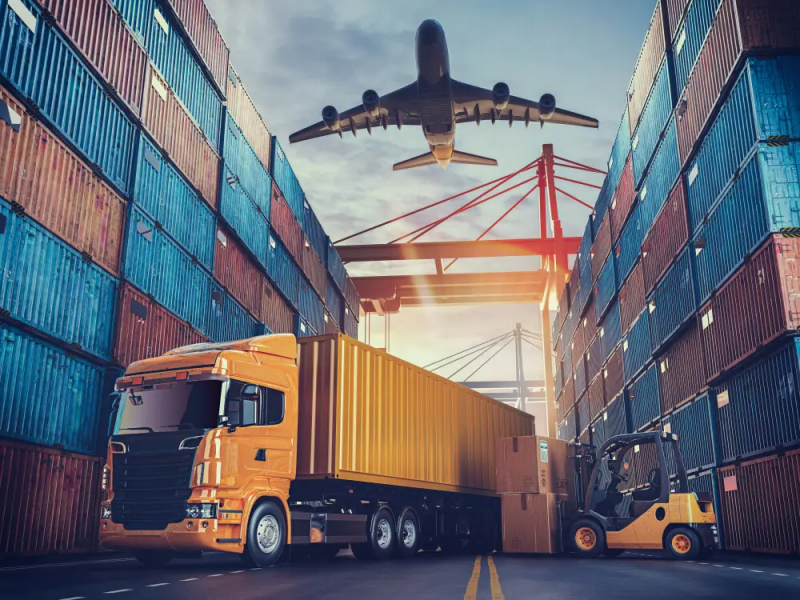
investlatvia.net 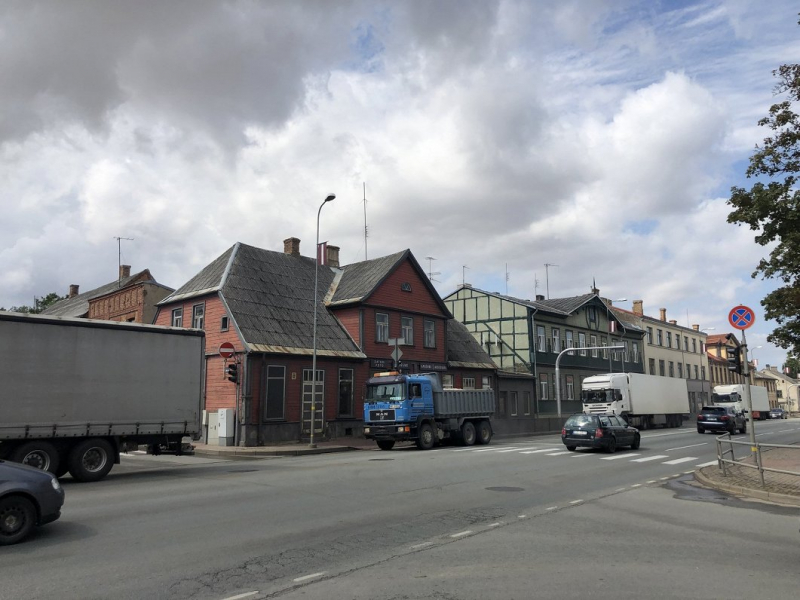
eng.lsm.lv -
Number two among things to know about Latvia is the beach. Latvia's coastline is more than 300 miles (500 kilometers) long, with some of Europe's most beautiful beaches. The Baltic coast is lined with secluded white sand beaches and hauntingly beautiful pine forests. Jrmala, a seaside town 30 minutes from Riga, is famous for its beautiful beaches and a unique architectural blend of 19th-century wooden houses. Kurzeme is a coastal region on Latvia's west coast about three hours' drive from Riga. During the Soviet era, the coast was a heavily guarded border, mostly off-limits to development, leaving Latvia with miles of breathtaking natural beauty along the isolated and rugged coastline.
A few coastal towns dot the coastline, the most notable being the 1.8mi (3km) Liepja Seaside Park, a Blue Flag beach and one of Latvia's largest forested parks. The Jurkalne Bluffs, a series of rounded cliffs, is 12.45 miles (20 kilometers) up the coast from the quaint fishing village of Pvilosta. Jurkalne (which translates to "Sea Mountain") is one of the most beautiful beaches on the Latvian coast, with the steepest coast in the country. Because of the strong winds and high dunes, the small town of Jurkalne attracts paragliders and kite surfers, but the long stretch of beach is often deserted.
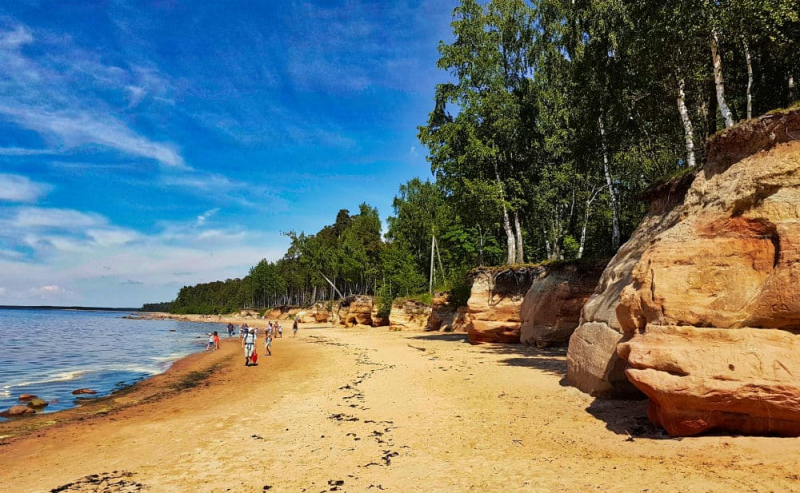
amateurtraveler.com 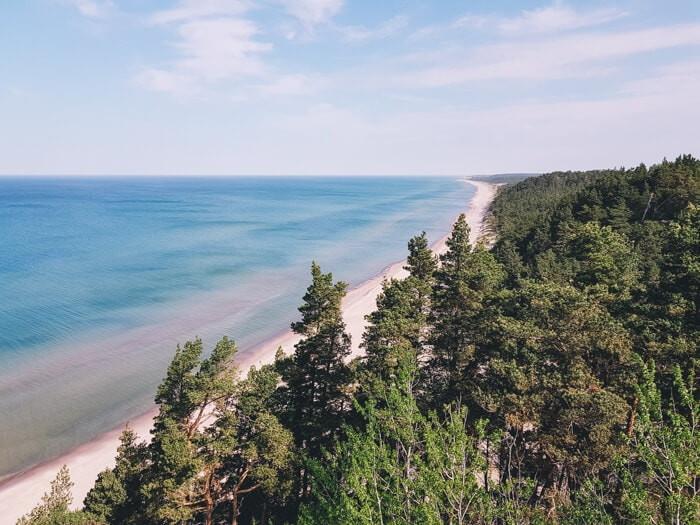
wonderfulwanderings.com -
Latvia's food scene is influenced by neighboring countries such as Sweden, Denmark, Finland, Russia, Poland, Germany, and, of course, Latvia's Baltic sisters – Lithuania and Estonia, which are located at the crossroads of Scandinavia and Eastern Europe. Hearty meat dishes, as well as smoked and pickled fish and pelmeni, are common on the Latvian menu. Seasonal harvests, such as wild mushrooms, berries, sorrel, and nettle, add distinctive styles and flavors.
While pelkie ziri – grey peas with speck (large grey peas similar to chickpeas, boiled then fried with fatty smoked bacon) are popular, it is Latvia's love affair with delicious rupjmaize that stands out (dark rye bread). Try kvass, a refreshing traditional Latvian drink made with rye bread that is similar to beer. Although it is considered nonalcoholic, it contains a small amount of alcohol, up to 1%. Maizes zupa, also known as rye bread soup, is a cold, thick sweet soup made with sweetened dark rye bread, water, dried fruits, and cream. Alternatively, rupjmaizes krtojums is a layered rye bread dessert similar to a trifle. Food is definitely one of the things to know about Latvia.
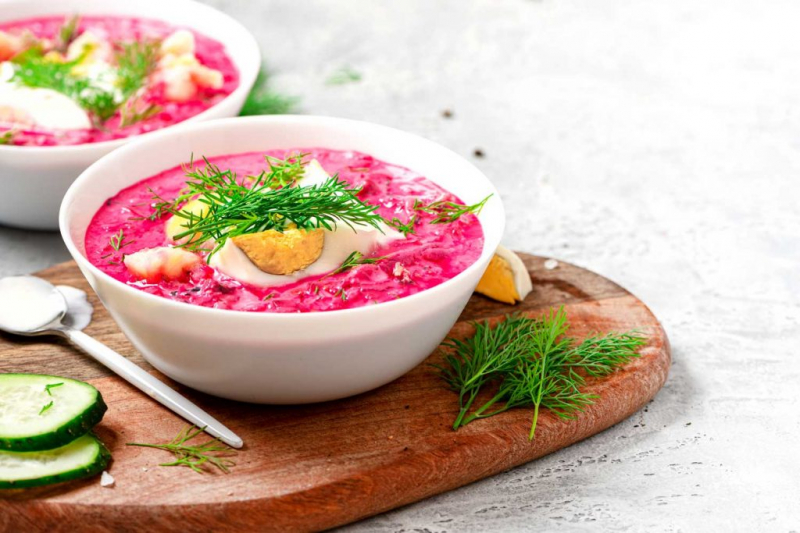
nomadparadise.com 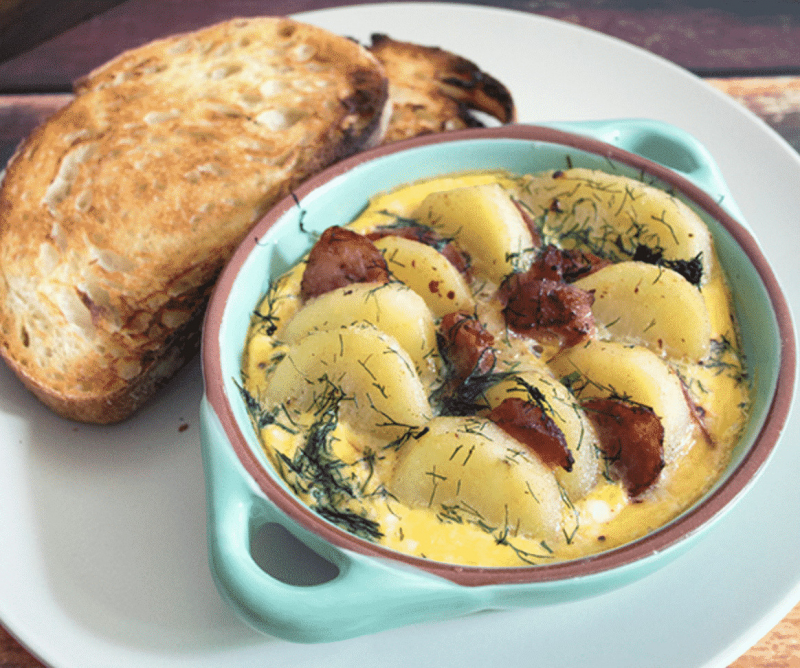
nomadparadise.com -
Latvia is one of Europe's greenest countries, with wilderness covering roughly half of the country. Latvia is an ideal hiking and camping destination, with 330 miles (530 kilometers) of woods bordering the Baltic coast. There are designated campsites throughout the country, but unlike many other places, wild camping is still permitted in Latvia, making getting back to nature here even more of an adventure.
The Great Kemeri Bog, one of Latvia's most picturesque landscapes, is a popular sunrise and sunset location for photographers all year. While coastal hiking is one of the best things to do in Latvia, the Great Kameri Bog in the Kameri National Park is a great day trip from Riga. Bogs are one of Latvia's most important natural resources, with many of them designated as EU-important protected areas. The wooden boardwalk is divided into two arcs. The shorter arc is a 0.93 mile (1.5 km) walk, and the longer arc is a 2.2 mile (3.7 km) walk with an observation platform that offers magnificent views of the bog from above.
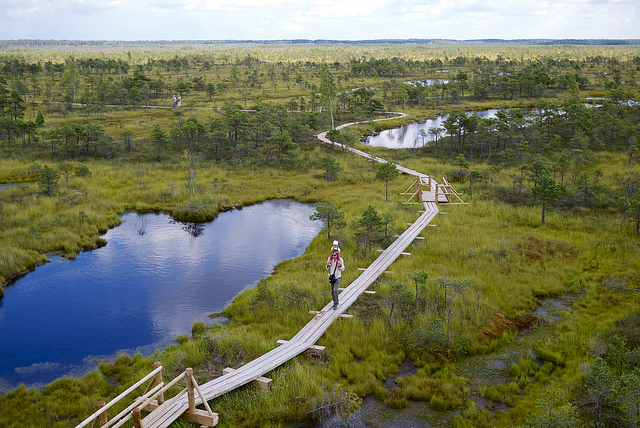
letthejourneybegin.eu 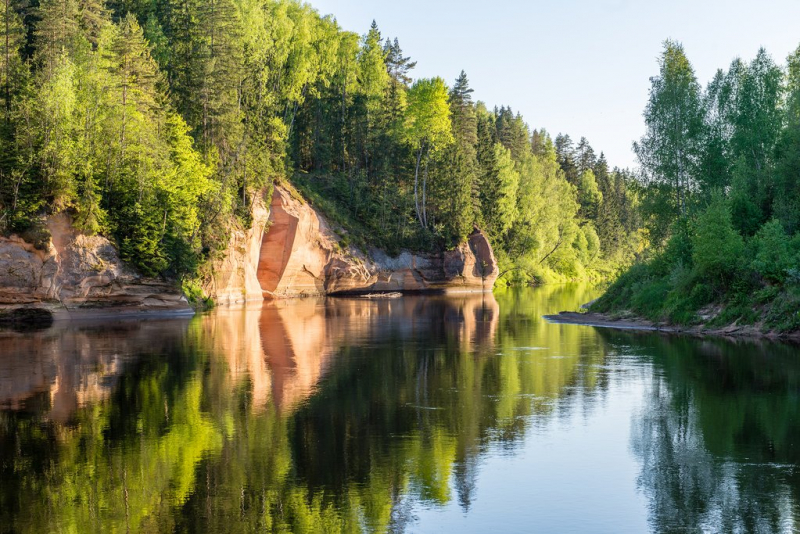
kimkim.com -
The flag of Latvia, one of the oldest flags in the world, was first mentioned in a medieval chronicle called the Rhymed Chronicle of Livonia. While no one knows for certain when the red and white flag was first used in Latvia, historical evidence suggests it could have been as early as the 13th century. A red flag with a white stripe was first mentioned in the Rhymed Chronicle of Livonia — the flag was used in 1279 during a battle between ancient Latvian tribes from Csis.
The red and white flag was formally adopted in 1918 and was used until Soviet occupation of Latvia began in 1940. The flag of independent Latvia was finally restored in 1990. According to legend, the red of the Lativian flag represents the blood of a Latvian chief who was wounded in battle and wrapped in a white sheet. The white part depicts where the chief was laying while the two edges were stained with his blood.
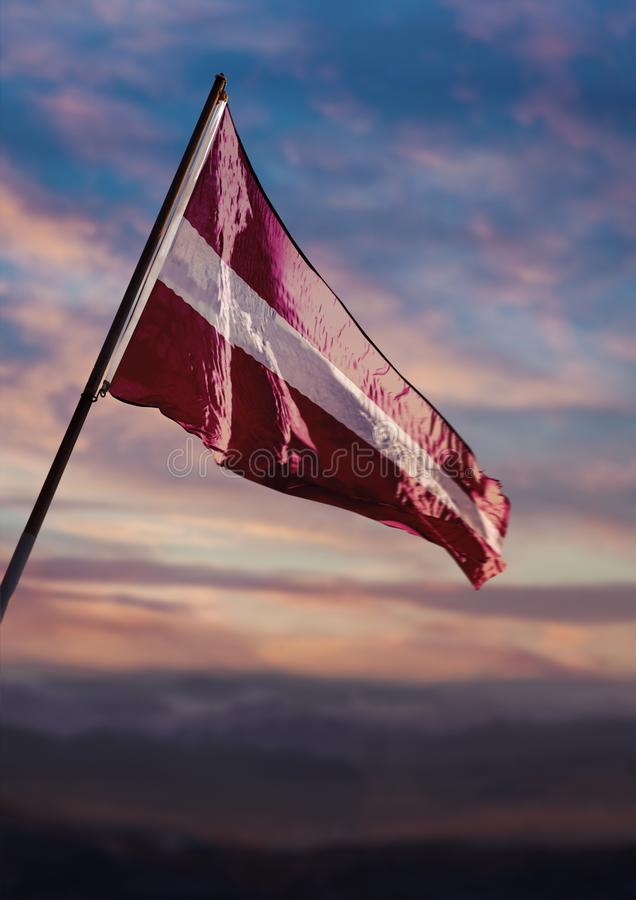
dreamstime.com 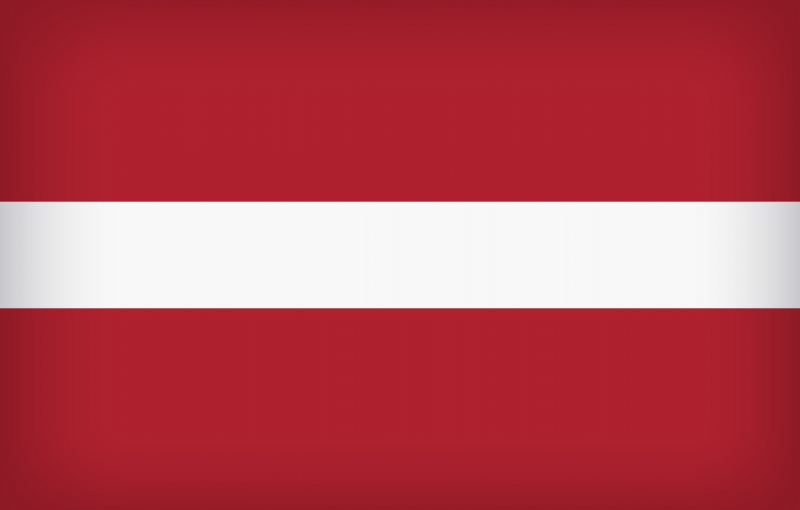
goodfon.com -
Jacob Davis was born in Riga and immigrated to the United States as a young man in 1854. He eventually opened a tailor in Reno, Nevada where a customer requested a strong pair of trousers for her woodcutter husband. This style of duck pants, reinforced with rivets, became very popular among people in need of heavy work clothing. Orders began to pour in, and Jacob produced 200 pairs over the next 18 months, some of which were made of duck and some of which were made of denim. He became concerned that someone would steal his idea and decided to patent it. He asked Levi Strauss for assistance because he didn't have enough money (about $68) for the patent application.
The official "birthday" of blue jeans is considered to be May 20, 1873. Jacob Davis was later promoted to production manager at Levi Strauss & Co. Another distinguishing feature of Jacobs' denim pants was the use of a double orange threaded stitch to set them apart from those of his competitors. This became US Trademark No.1339254. This is unquestionably one of the most interesting things to know about Latvia.
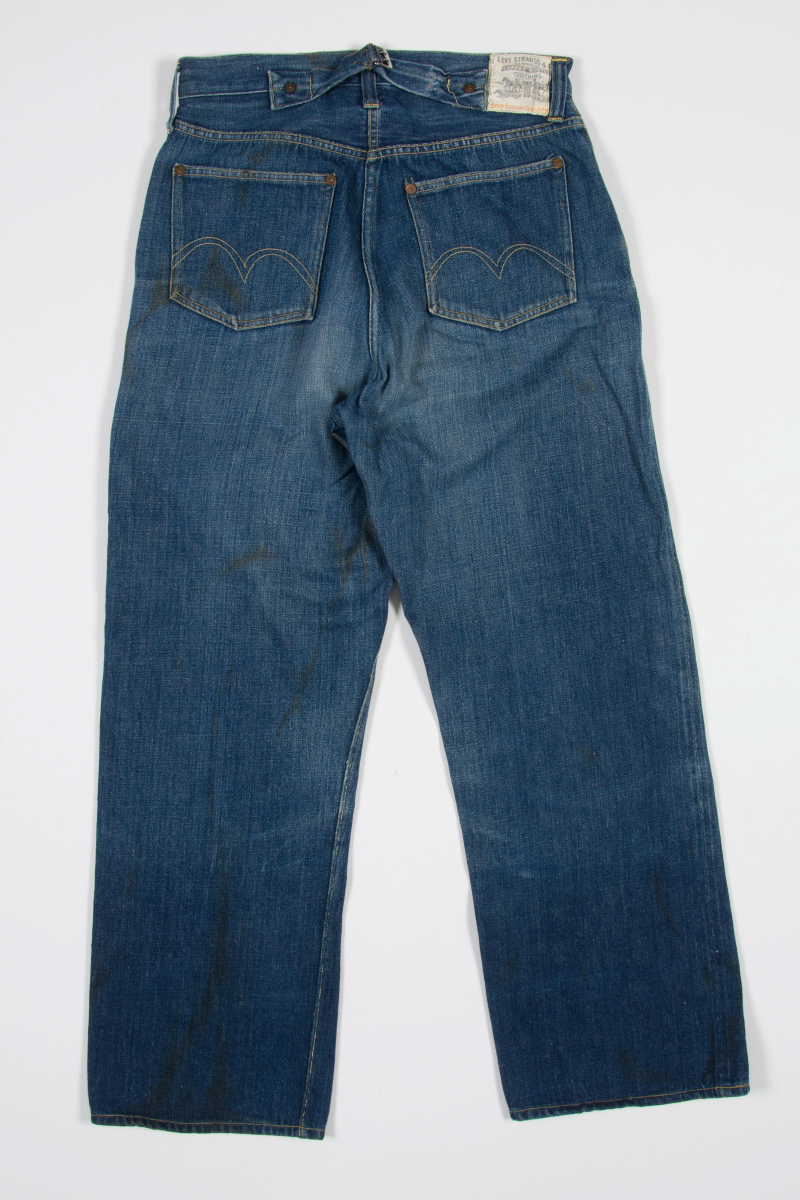
time.com 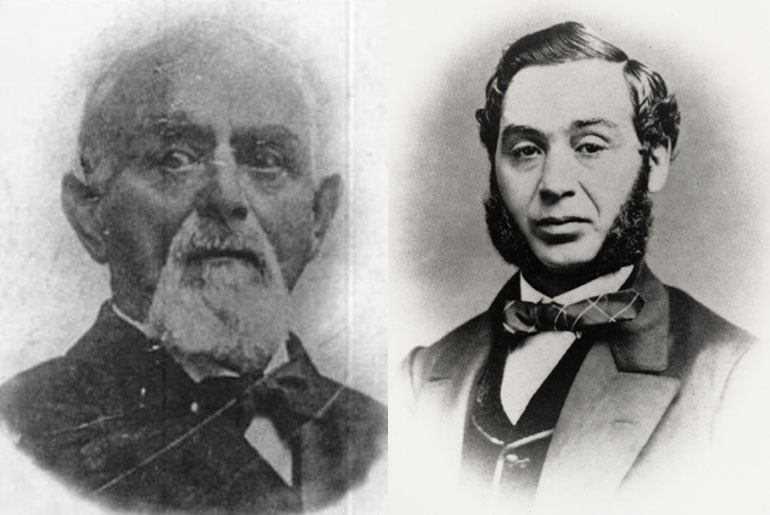
elle.com -
Karosta Prison is located in the city of Liepaja, Latvia, a small country in Northern Europe. Originally built as an infirmary, it was used as a prison by Nazis and Soviets during WWII. Thousands of Latvian deserters were executed here by Nazis. According to an unofficial count, at least 5000 people were killed in one way or another at the Karosta Prison facility, the majority of whom were shot. Surprisingly, this prison has now been converted into a museum and hotel where you can stay in one of the jail cells.
Checking in handcuffed, having your mug shot taken, sleeping on a mattress on your cell's cold floor, agreeing to verbal abuse by the well-trained staff (dressed and acting as uniformed soldiers), and being subjected to physical exercise and even prison cleaning if you don't comply are some of the highlights of your stay at Karosta Prison. This is clearly not for the faint of heart. If you consider yourself to be strong, the haunted house will put you to the test in other ways. Bulbs falling out of their holders, doors opening and closing on their own, sobbing and crying sounds, a sudden unearthly cold, most likely a paranormal presence, and spirit sightings are all common occurrences on prison grounds, according to guards and staff. The unique model of the prison converted hotel has however attracted many tourists from across the world.
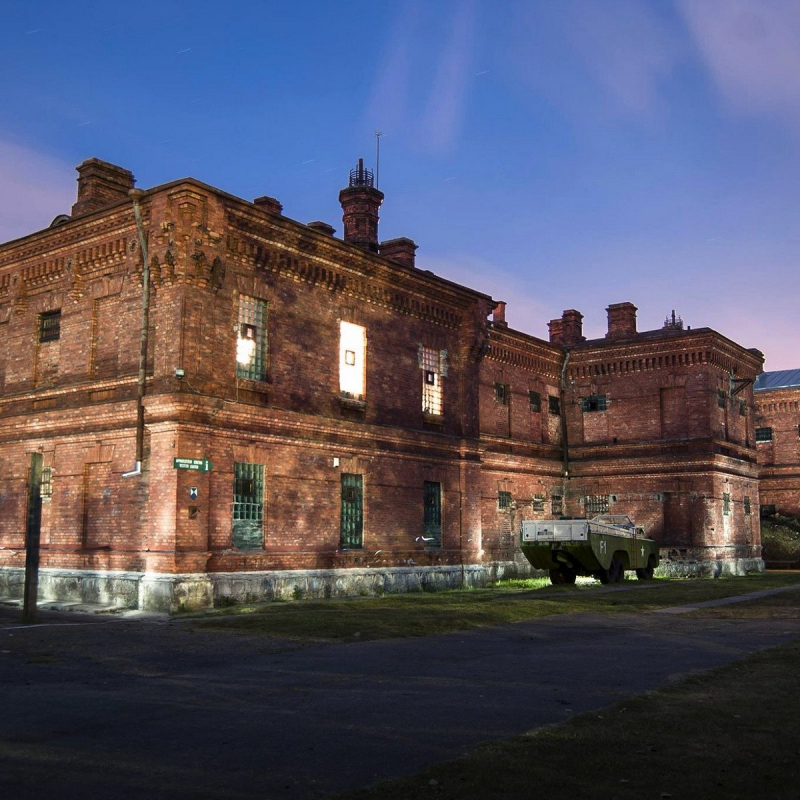
tripadvisor.com 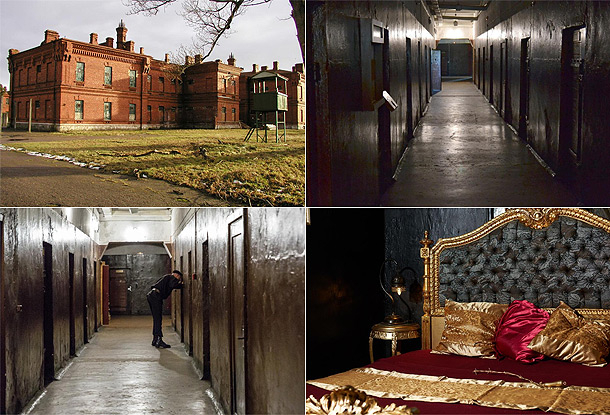
unique-hotels.eu -
The old town of Riga, among one of the things to know about Latvia, is a UNESCO World Heritage Site. While the city's 13th-century churches contributed to its elevated status, it is the Art Nouveau architecture that truly distinguishes it. Over 800 Art Nouveau buildings can be found in the city. Riga was at the forefront of the movement at the turn of the twentieth century. Art Nouveau influenced designers of furniture, silverware, porcelain, linens, and clothing in addition to architects. Art Nouveau was the first example of modern design, which grew in popularity after World War I and continued to evolve throughout the century.
Take a walk down Alberta Iela to admire the intricate motifs, curved lines, and vibrant colors. Mikhail Eisenstein (1867-1921), father of the legendary Russian filmmaker Sergei Eisenstein, who gave the world such cinematic treasures as Battleship Potemkin and Ivan the Terrible, was one of the city's most prolific Art Nouveau architects. He is best known for his Alberta iela collection of buildings, which are known for their unusual sculpture, colored bricks and tiles, geometric ornaments, and uniquely shaped windows.
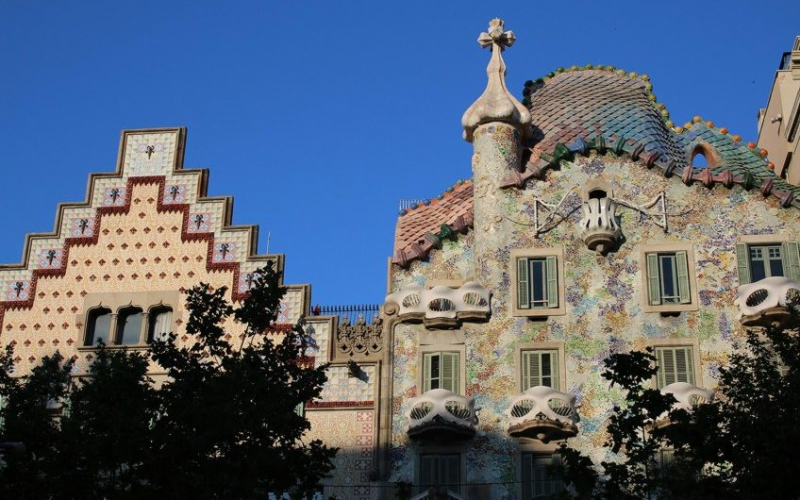
artincontext.org 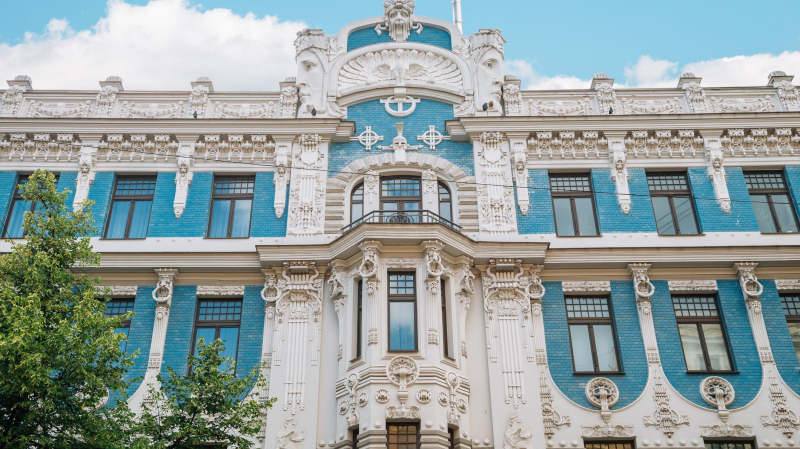
thespruce.com -
Latvia is one of Europe's greenest countries, with forest covering approximately 45% of the land area. Foraging is also popular, and unlike in most countries, anyone is free to pick and eat whatever they find in state-owned forests. Every Latvian household can legally cut down one pine tree during the Christmas season.
Latvia's forest ecosystem is the most important part of the country's environment. The most common tree species are pine, fir, and birch. Forest land in Latvia accounts for 2,923 thousand ha. The area of forest land in Latvia has nearly doubled since the turn of the century. Historically, the expansion of forest land area has been linked to both natural overgrowth of land no longer used for agriculture and intentional afforestation of such land. Forests are expected to cover 50–55 percent of Latvia's territory in the near future, thanks to afforestation of land no longer used for agriculture and other purposes.
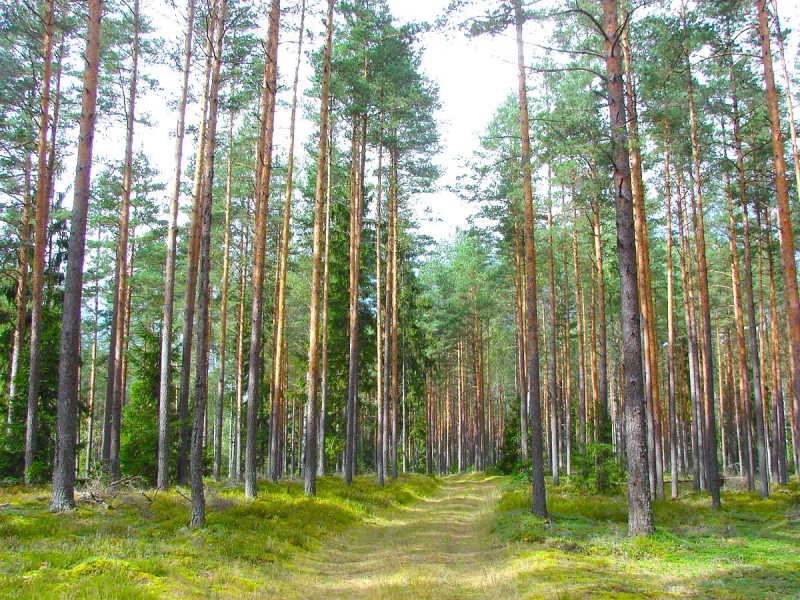
wikipedia.org 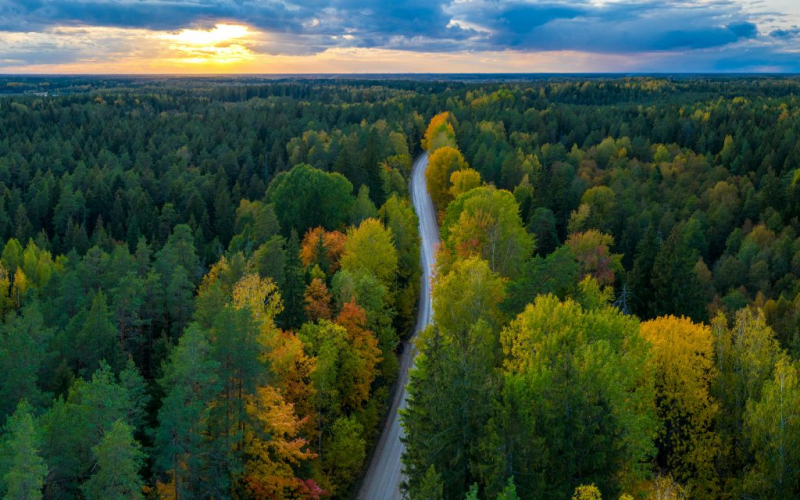
drax.com -
Latvians have one of the highest per capita consumption rates. The frothy stuff also has a cultural significance, as it is mentioned in folk songs, Latvian legends, and dedicated events and festivals. Beer is a popular beverage in Latvia, where it has been brewed since ancient times. Summer solstice or Lgo, when it is a matter of honor for the host to serve self-brewed beer, is one of the most popular and oldest Latvian festivities that cannot be imagined without beer. Each home-brewed beer is unique; adding more hops makes it bitterer, while adding malt makes it sweeter. One is more powerful, while the other is a little lighter. They are, however, all alive beers with their own distinct bouquet of flavors.
Latvia Beerfest is held in Riga to honor beer, and more than 50 Latvian beer brands can be sampled. Beer can be enjoyed in Riga's many cafes on any given day. It's also one of the few places in the world where you can get a beer spa treatment. The experience promises to'restore and recover the skin' and includes a 20-minute soak in a beer bath, body peeling with brewer's grain, and a body relaxation massage with beer hops.
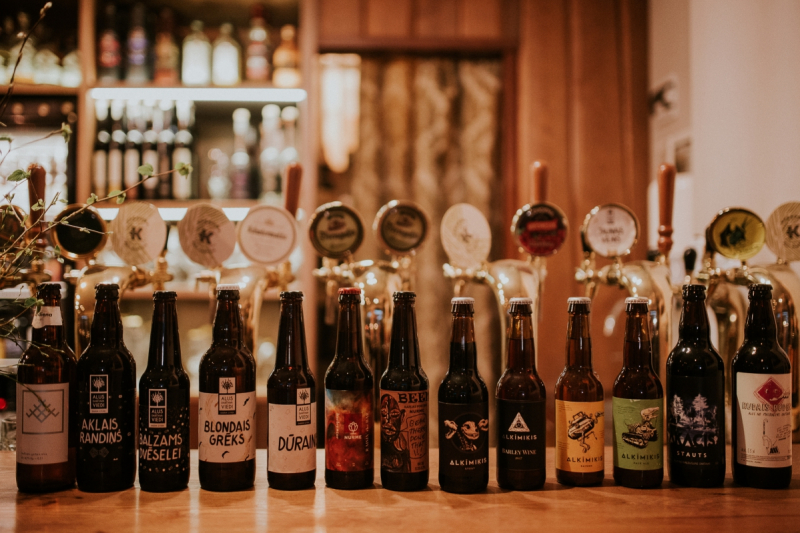
latvia.travel 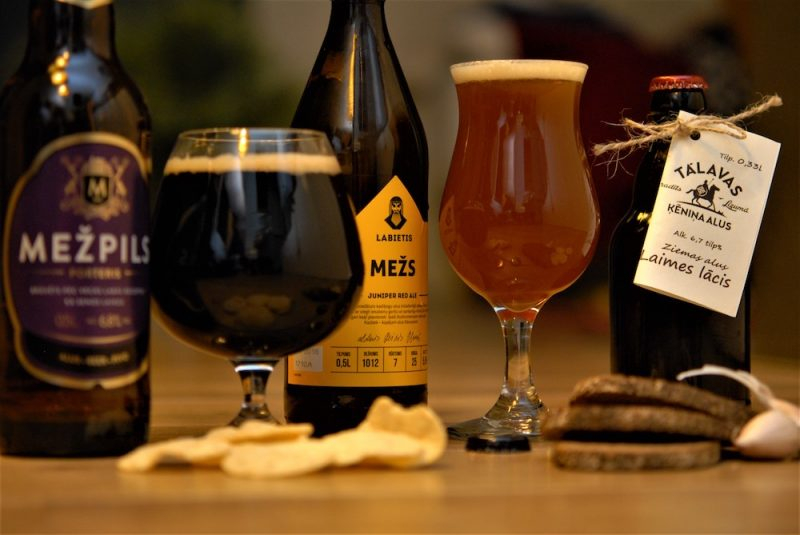
thefoodellers.com












